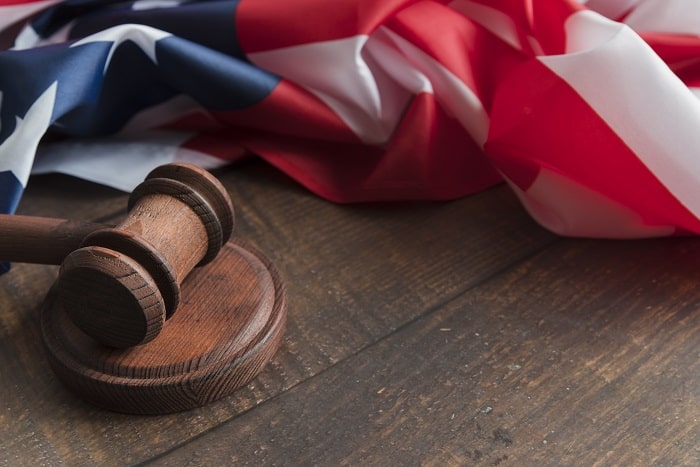Criminal Trial Procedures: An Overview
Facing criminal charges is never a small thing, and the complexity and size of the criminal justice system easily overwhelm most defendants. Criminal defense attorneys are there to both protect the defendant’s rights and to steer him/her through the justice system with minimal delay.
When people think about a criminal case, the first thing that comes to mind is typically the trial proceedings. The trial is the climax of the criminal case where the judge and jury decide if the person is guilty or not. The depictions of criminal trials on television are ubiquitous and usually depicted as very dramatic events that always include the proverbial smoking gun.
While such trials do happen, most are very structured with few surprises. Given that the stakes are a person’s liberty, understanding what to expect during trial proceedings will help anyone facing criminal charges prepare for this stressful event. An overview of the components of a typical criminal trial will follow below.
What Rights do People Have During Trial Proceedings?
All defendants facing charges that could result in jail or prison time have the right to a trial by jury. While it is possible for a judge to decide a person’s guilt, a jury is typically the preferred method because it allows the defendant to have his/her peers determine the outcome.
In addition, the defendant has the right to remain silent, which means he/she cannot be forced to testify. Finally, the accused is always presumed innocent until convicted, and the prosecutor is obligated to prove guilt beyond a reasonable doubt.
What is the Process by Which a Jury is Selected?
Jury selection is the initial step in the trial process and is a very important component because these are the individuals that will decide the defendant’s fate. The attorneys pick jurors through a questioning procedure called voir dire, which continues until both sides agree on 12 jurors.
The purpose of the questioning is to weed out individuals harboring biases that could influence how they decide the case. Thus, both attorneys have the ability to dismiss jurors as long as the rejection of someone is not based on that person’s sex, religion, race, ethnicity, and the like.
Which is the Earliest Stage of a Criminal Trial?
The early stages of a criminal trial are specifically overpowering because everything happens so fast, and defendants rarely have adequate time to confer with an attorney. Consequently, an overview of the early stages of California’s criminal trial process will follow below.
What Happens at an Arraignment?
Arraignment is the first time a person accused of a crime appears in court. At this hearing, the judge will inform the accused about his/her Constitutional rights, including the right to a lawyer, and the nature of the criminal charges against him/her. In addition, the accused will have the opportunity to enter a plea in the case – guilty, not guilty, or no contest.
Arraignments are held after the prosecutor files formal charges, and must occur within 72 hours of arrest, excluding weekends and holidays, if the person remains in police custody. If a person is released following arrest, the arraignment is supposed to take place “without unnecessary delay,” but given how backlogged the criminal system is in California, the hearing may not happen for weeks or months.
Note that the 72-hour rule for those held in police custody applies regardless of whether the charge is a misdemeanor or a felony.
What Happens at a Bail Hearing in California?
Bail is the amount of money a defendant must post with the court to ensure he/she will attend all court appearances. The issue of bail is commonly addressed at the arraignment hearing but may be held as a separate proceeding if the defendant requests a reduction or elimination of the bail amount. The bail is set on a county-by-county basis and according to the type of offense.
However, California lawmakers are working on reforms to the bail system that takes into account how unfair it is to poor defendants. Typically, most people post bail through a bail bondsman. The bondsman agrees to pay the bail in exchange for a percentage of the bail amount. This fee is nonrefundable. When a judge assesses whether to modify the bail amount a number of factors about the accused’s past and character come into play.
Courts look, in particular, at the following:
- the nature and seriousness of the alleged crime;
- past criminal history;
- the probability the accused will appear for future court appearances; and
- public safety.
Alternately, the accused can ask the judge to release him/her without posting any bail, termed on one’s own recognizance, or O.R. release.
All defendants not accused of crimes punishable by death are entitled to release unless it would endanger public safety or fail to reasonably ensure the defendant will appear for future court dates.
What is an Opening Statement for a Trial Proceeding?
Opening statements are the first part of a live trial, during which the state and the defense have an opportunity to explain to the jury what they intend to prove.
Evidence cannot be introduced, but the attorneys can give jurors an overview of the type of information that will be discussed.
How Do You Present Evidence in a Trial?
The heart of a case rests on the evidence, which is shown to the jury through witness testimony, photos, documents, and other relevant and informative items.
Both sides have the right to question a witness, but the witness is only permitted to testify about things he/she personally knows. Thus, information learned from a third party cannot be presented.
What is a Closing Argument?
Once all the evidence is presented, both lawyers offer closing arguments. These arguments involve a review of the evidence, but cannot refer to new information, and are presented to persuade the jury that a particular side’s view of the evidence is correct.
What is the Verdict in the Trial Proceedings?
After closing arguments, the jury is sent off to deliberate and decide if the defendant is guilty or not. The jury cannot consider evidence that was not officially accepted by the judge, and the decision must be unanimous.
If there is disagreement with just one juror, a verdict cannot be rendered, and a “hung jury” is declared. If this occurs, a mistrial is usually announced, which requires a completely new trial. The prosecution may also opt to take a plea bargain on lesser charges or dismiss the case.
Is a Sentence Part of a Trial?
Finally, if the defendant is found guilty, a sentencing hearing will be held where both attorneys try to convince a judge what sentence to apply. The judge makes the ultimate decision on the punishment a defendant receives, which is set by sentencing guidelines in California law.
The severity is based on any mitigating or aggravating factors that may be present.
Hire a Criminal Defense Attorney
Being charged with a crime can forever change your life, but a criminal defense attorney is there is make sure the impact is as minimal as possible. The Manshoory Law Group, APC represents individuals throughout California charged with crimes in both State and federal court. They understand how overwhelming the criminal process can be and will fight to get you the best possible result.
Attorneys are available 24/7, so contact us today for a free consultation.




